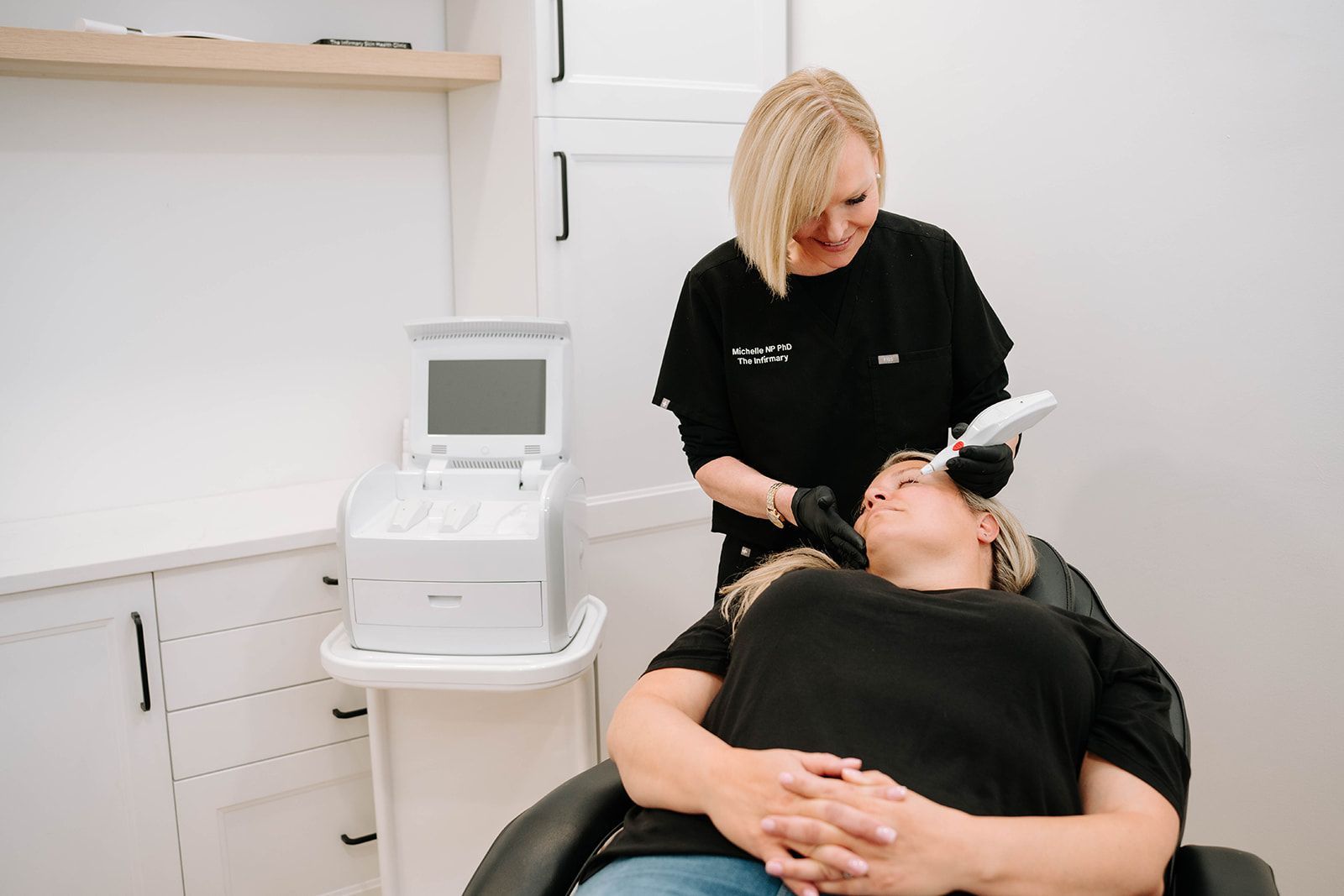unwanted moles & benign lesions.
WHAT ARE BENIGN LESIONS
Benign skin lesions — such as moles, skin tags, seborrheic keratoses, and cherry angiomas — are common, harmless growths that can develop anywhere on the body. While typically not a medical concern, they can sometimes be bothersome, raised, or located in visible areas where they affect confidence or comfort.
These growths form due to factors like genetics, sun exposure, friction, or natural aging. Fortunately, modern non-surgical treatments allow for safe and precise removal with minimal discomfort or downtime. Each technique targets the lesion directly while protecting the surrounding skin, leaving a smooth, even finish once healed.
How We Treat
Following a detailed consultation, we customize your treatment plan using one — or a strategic combination — of the therapies below, tailored to your unique skin needs:
- Plasma Pen (Plexr)
- Cryotherapy (Cryopen)
- Cryotherapy (Glacial Rx Freeze)
Compatible Products
To support and extend your in-clinic results, we recommend the following medical-grade products as part of your at-home routine:
- Vivier VSTAT
- SPF
Frequently Asked Questions
1. What are benign skin lesions?
Benign lesions are non-cancerous skin growths that include moles, skin tags, warts, keratoses, and small vascular spots such as cherry angiomas. They are common and usually harmless but may be removed for comfort, cosmetic reasons, or if they become irritated.
2. Is the procedure painful?
Most clients find these treatments very tolerable. You may feel brief warmth with Plexr® or a short cooling sensation with CryoPen or Glacial Freeze. Topical and injectable numbing is available to ensure comfort during the procedure.
3. What is the healing process like?
After treatment, the area may appear slightly red or form a small scab for several days. This typically resolves within 7–10 days, revealing smoother, clearer skin. It’s important to keep the area clean, avoid picking, and protect it from sun exposure while healing.
4. How do I know if my mole or lesion can be treated cosmetically?
Before removal, our Nurse Practitioner will assess the lesion to confirm that it appears benign and suitable for in-clinic treatment. Any lesions that look suspicious or require further medical evaluation will be flagged appropriately to ensure your safety.



